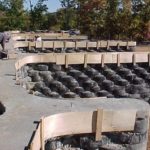- Course No.: E – 2084
- PDH Units: 2
No data found for Custom Course Number
No data found for Custom Course Units
- Course No.: E – 2084
- PDH Units: 2
Intended Audience: Civil, Structure and Building engineers
PDH UNITS: 2
Earthquakes pose significant risks to building infrastructure, especially in regions with high seismic activity. This course introduces participants to the critical role of benefit-cost analysis (BCA) in assessing and improving the resilience of buildings against earthquakes. By examining how BCA can inform decisions on building codes, retrofitting, and above-code design, participants will learn how to balance safety and cost-effectiveness in mitigating earthquake risks. This course dives into the essential role of benefit-cost analysis (BCA) in improving the resilience of buildings in earthquake-prone areas. Students will explore the state-of-the-art methods and tools used to assess the economic and safety benefits of adopting modern building codes, retrofitting existing structures, and exceeding code requirements. This course is designed to captivate your interest by revealing the opportunities for enhancing building resilience while optimizing investment. Through real-world case studies and expert insights, you’ll uncover how to use BCA to inform critical decisions that can save lives, reduce losses, and future-proof buildings against natural disasters. Whether you're a policymaker, engineer, or building owner, this course will equip you with the knowledge to make smarter, more sustainable choices. This course is ideal for engineers, architects, building owners, policymakers, and disaster preparedness professionals interested in improving the earthquake resilience of buildings. It is also suitable for anyone involved in urban planning, construction, or infrastructure management who seeks to understand the economic and safety benefits of earthquake-resistant designs and retrofitting. By the end of this course, attendees will be equipped with the knowledge to make data-driven decisions that improve the earthquake resilience of buildings while optimizing costs. They will gain insights into BCA methodologies, real-world case studies, and practical strategies for enhancing building performance in seismic events.
Learning Objectives
At the successful conclusion of this course, you’ll be able to identify and discuss:- Understand the principles of benefit-cost analysis (BCA) and its application in earthquake risk reduction.
- Evaluate the cost-effectiveness of adopting modern building codes and retrofitting older buildings.
- Explore the benefits and trade-offs of designing buildings that exceed minimum code requirements.
- Learn to use BCA tools and methodologies for informed decision-making in building design and retrofits.
- Analyze real-world case studies to understand the practical application of BCA in earthquake resilience.
- Identify research gaps and future opportunities in the field of earthquake-resilient building design.
Once completed, your order and certificate of completion will be available in your profile when you’re logged in to the site.










